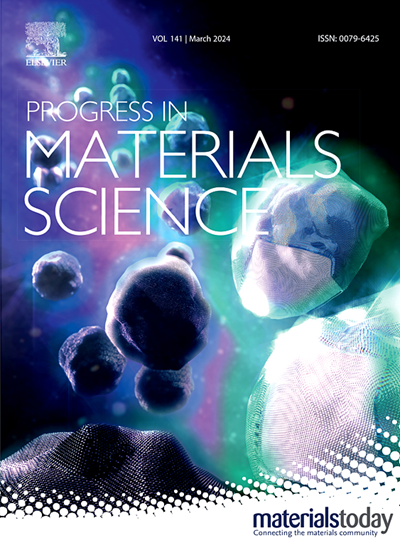高效耐用锌金属阳极的综合晶体学工程
IF 40
1区 材料科学
Q1 MATERIALS SCIENCE, MULTIDISCIPLINARY
引用次数: 0
摘要
由于其高安全性、可接受的能量密度和成本效益,水性锌离子电池(azib)在大规模储能系统和可穿戴设备中具有重要的应用前景。然而,AZIBs面临着严峻的挑战,包括Zn枝晶、副反应、反应动力学迟缓和穿梭效应,导致Zn阳极容量迅速下降和循环寿命有限,对其实际应用构成了重大障碍。调节锌阳极表面的晶体取向是防止枝晶生长的有效途径。调节Zn原子沿Zn(002)晶面取向沉积,可以获得无枝晶的Zn阳极。此外,(002)平面的定向沉积减少了副反应。本文深入分析了锌阳极面临的挑战,并探讨了通过调控锌定向沉积实现高性能锌阳极的可行性。系统地总结了锌(002)晶体平面感应的综合晶体学调控策略,包括制备策略和设计。最后,对定向沉积的机制进行了全面的综述。讨论了目前Zn(002)平面定向沉积的局限性和未来的发展机会,以提高azib的商业可行性。本文章由计算机程序翻译,如有差异,请以英文原文为准。
Comprehensive crystallographic engineering for high-efficiency and durable zinc metal anodes
Aqueous zinc-ion batteries (AZIBs) hold significant promise for large-scale energy storage systems and wearable devices due to their high safety, acceptable energy density, and cost-effectiveness. However, AZIBs face formidable challenges, including Zn dendrites, side reactions, sluggish reaction kinetics, and shuttle effects, which lead to rapid capacity reduction and limited cycle life of Zn anodes, posing a significant barrier to their practical application. Modulating the crystal orientation on the surface of Zn anodes is an effective approach to prevent dendrite growth. Regulating the oriented deposition of Zn atoms along Zn(002) crystal planes can achieve a dendrite-free Zn anode. In addition, side reactions are reduced by the directional deposition of (002) plane. This review provides an in-depth analysis of the challenges facing Zn anodes and explores the feasibility of achieving high-performance Zn anodes through the regulation of Zn directional deposition. Comprehensive crystallographic regulation strategies are systematically summarized, including preparation strategies and designs of Zn(002) crystal plane induction. Finally, the mechanisms underlying directional deposition are thoroughly reviewed. The current limitations of Zn(002) plane-oriented deposition and future development opportunities are discussed to advance the commercial viability of AZIBs.
求助全文
通过发布文献求助,成功后即可免费获取论文全文。
去求助
来源期刊

Progress in Materials Science
工程技术-材料科学:综合
CiteScore
59.60
自引率
0.80%
发文量
101
审稿时长
11.4 months
期刊介绍:
Progress in Materials Science is a journal that publishes authoritative and critical reviews of recent advances in the science of materials. The focus of the journal is on the fundamental aspects of materials science, particularly those concerning microstructure and nanostructure and their relationship to properties. Emphasis is also placed on the thermodynamics, kinetics, mechanisms, and modeling of processes within materials, as well as the understanding of material properties in engineering and other applications.
The journal welcomes reviews from authors who are active leaders in the field of materials science and have a strong scientific track record. Materials of interest include metallic, ceramic, polymeric, biological, medical, and composite materials in all forms.
Manuscripts submitted to Progress in Materials Science are generally longer than those found in other research journals. While the focus is on invited reviews, interested authors may submit a proposal for consideration. Non-invited manuscripts are required to be preceded by the submission of a proposal. Authors publishing in Progress in Materials Science have the option to publish their research via subscription or open access. Open access publication requires the author or research funder to meet a publication fee (APC).
Abstracting and indexing services for Progress in Materials Science include Current Contents, Science Citation Index Expanded, Materials Science Citation Index, Chemical Abstracts, Engineering Index, INSPEC, and Scopus.
 求助内容:
求助内容: 应助结果提醒方式:
应助结果提醒方式:


